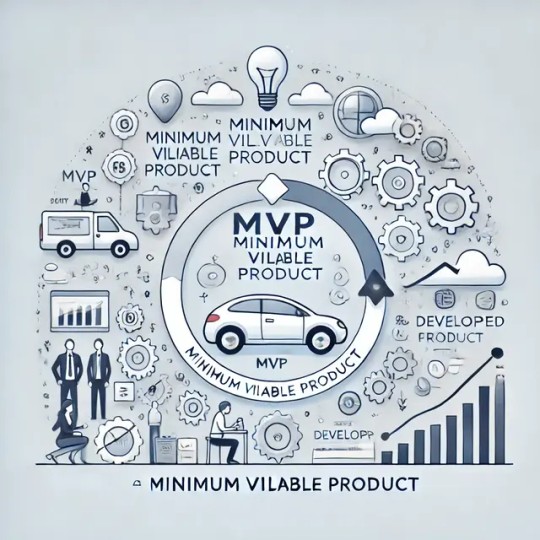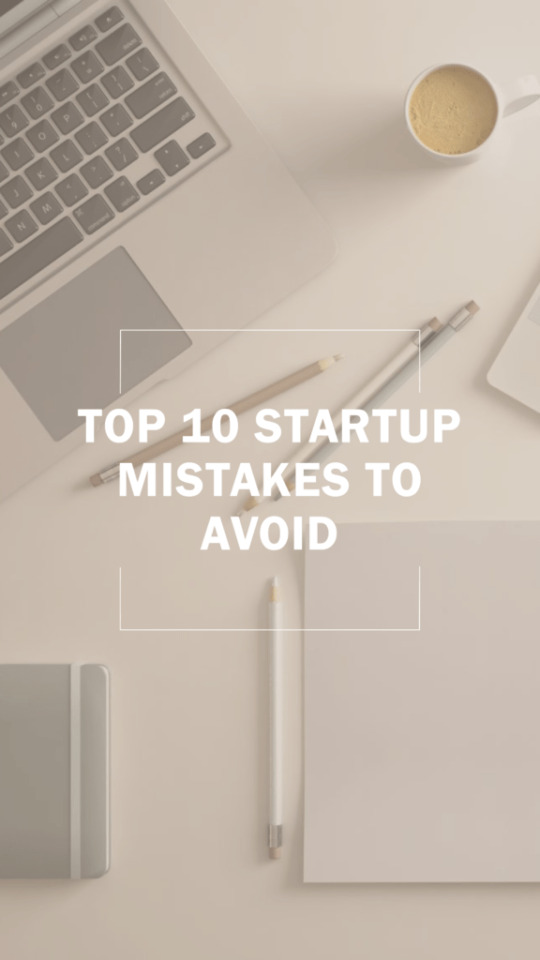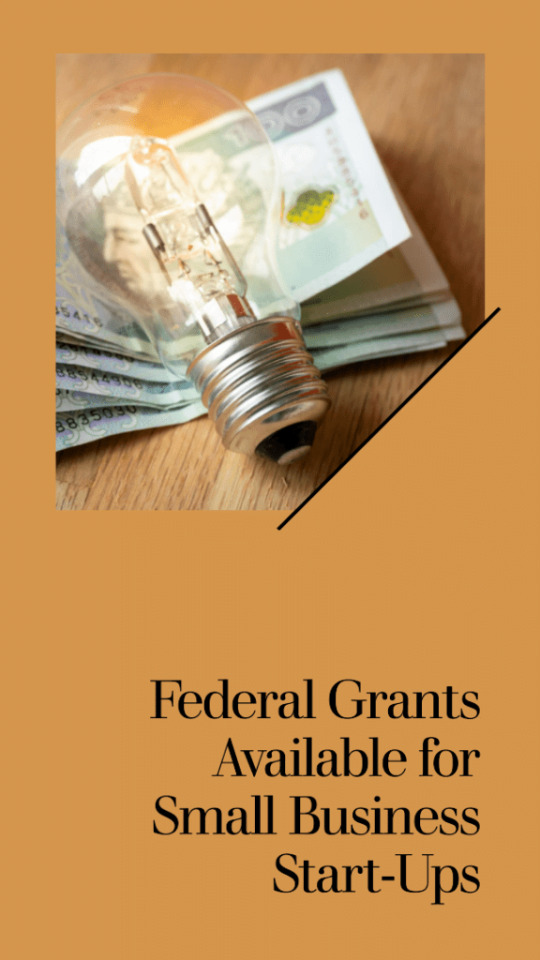#eCommerce ads example
Explore tagged Tumblr posts
Text
Highly Effective Product Ads Examples: Best Way For Business Success

Advertisement of a product is so essential in the current scenario. You may readily contact your target audience by displaying adverts for your items. You can also use product ad examples to make your advertising more unique and attractive.
So, have you ever tried creating your product's ads before? If your answer is yes, then it's perfect. But if your answer is no, then don't worry! Because this article is beneficial for you in grabbing knowledge regarding the creation of product ads and e-commerce ads.
Let's learn them one by one.
What Is Product Ads?
Product advertisements are marketing materials created to highlight and market a certain product to potential customers. These advertisements use a variety of visual and textual elements to showcase the product's characteristics, benefits, and unique selling factors, with the goal of capturing the target audience's attention and persuading them to make a purchase.
Product commercials that are effective generally use appealing imagery, persuasive language, and emotional appeal to connect the consumer's wants or aspirations to the product's solutions.
Print ads, TV commercials, internet banners, social media posts, and other types of advertising can be used, each tailored to the platform and audience for the best impact. Finally, in today's competitive market, product advertising plays a key role in driving brand recognition, increasing sales, and influencing consumer decisions.
05 Best Effective Product Ads Examples
Get A Mac By Apple
Apple's series of TV advertisements contrasting a casual Mac user with a formal PC user effectively portrayed the Mac's user-friendly, inventive nature, resonating with viewers and adding to Apple's brand identity.
Real Beauty Sketches By Dove

Dove's stunning campaign, which featured women explaining themselves to a forensic sketch artist, focused on self-perception and beauty. The emotional impact of understanding their self-criticisms was too negative and struck a chord, promoting Dove's message of self-acceptance.
Just Do It By Nike
Nike's iconic phrase has been at the center of many successful advertising campaigns, including the one starring Colin Kaepernick. This daring action linked the company to social activism, sparking debate and increasing Nike's name.
Alexa Loses Her Voice By Amazon
Amazon's Super Bowl ad mocked what would happen if Alexa lost her voice, highlighting the product's features and including celebrity cameos for added entertainment.
Pepsi Challenge By Pepsi
Pepsi's taste test campaign placed its cola against rival Coca-Cola in blind taste testing, thereby challenging Coca-Cola's perceived superiority and increasing Pepsi's market share.
Is E-Commerce Ads Beneficial For Business Growth?
E-Commerce ads are advantageous to business growth. In the current era, these adverts can reach a precise audience, boosting brand awareness and customer engagement.
E-Commerce ads may efficiently bring probable customers to your online business via platforms such as search engines and social media, resulting in higher website traffic, conversion rates, etc. Organizations can adjust their advertising strategy for maximum outcomes by carefully targeting specific demographics and tracking real-time knowledge.
Furthermore, E-Commerce advertising supplies a competitive advantage by showing products with stunning imagery and fascinating information differentiating your business in a crowded market. Aside from it, you can also use Instagram Advertising for enhancing your followers.
Retargeting opportunities are particularly critical in re-engaging users who have expressed interest but have not yet made a purchase. Businesses may tap into the enormous potential of digital marketing by leveraging the scalability, measurability, and variety of eCommerce ads to extend their consumer base, enhance their market presence, and generate long-term success.
Top 05 E-Commerce Ads Examples
Shopping Ads By Google

These ads appear in Google search results with product photos, pricing, and store names. A user searching for "running shoes" may get a carousel of products with photographs, pricing, and connections to online stores.
Carousel Ads By Facebook
You may create carousel ads on Facebook that includes many photos or videos displaying various products. Its interesting structure allows you to highlight several features of your product line.
Story Ads By Instagram
These full-screen vertical ads appear amid the stories of users. Brands can utilize Stories to display items in action, behind-the-scenes content, or user-generated content in innovative ways. You can also watch: How To Create User Request For A New Advertisement
youtube
Final Words!
The world of product advertisements highlights the fluid and ever-changing character of modern marketing. Brands have used the power of advertising to engage with people on profound levels through inventive techniques, appealing imagery, and emotionally relevant storytelling. The product ad examples displayed emphasize the need of knowing consumer psychology, adapt messages to specific groups, and leveraging several platforms for optimum impact.
2 notes
·
View notes
Text
#website banner#website banner size#website banner ideas#website banner examples#website banner design#website banner image size#website banner size in pixels#standard website banner size#shopify website banner size#website banner maker#ecommerce website banner#website banner ads#website banner aspect ratio#website banner ad sizes#website banner ad examples#website banner ad mockup#website banner ad specs
1 note
·
View note
Text
Sponsored listings are a ripoff…for sellers

Tonight (November 29), I'm at NYC's Strand Books with my novel The Lost Cause, a solarpunk tale of hope and danger that Rebecca Solnit called "completely delightful."

Not all ads are created equally sleazy. The privacy harms from surveillance ads, though real, are often hard to pin down. But there's another kind of ad - or "ad" that picks your pocket every time you use an ecommerce site.
This is the "sponsored listing" ad, which allows merchants to bid to be among the top-ranked items in response to your searches - whether or not their products are a good match for your query. These aren't "ads" in the way that, say, a Facebook ad is an ad. These are more #payola, a form of bribery that's actually a crime (but not when Amazon does it):
https://en.wikipedia.org/wiki/Payola#U.S._investigations_and_aftermath
Amazon is the global champion of payola. It boasts of $31 billion in annual "ad" revenue. That's $31 billion that Amazon sellers have to recoup from you. But Amazon's use of "most favored nation" deals (which requires sellers to offer their lowest prices on Amazon) mean that you don't see those price-hikes because sellers raise their prices everywhere:
https://pluralistic.net/2023/04/25/greedflation/#commissar-bezos
Forget Twitter: Amazon search is the poster-child for enshittification, in which Amazon locks you in (for example, with a year's shipping prepaid through Prime) and then you get recommended worse products while sellers make less money and Amazon pockets the difference.
Sellers who don't sell on Amazon are dead in the water, because most US households have Amazon Prime and overwhelmingly, Prime users start their search on Amazon, and, if they find the goods they're seeking. After all, they've prepaid for shipping.
So sellers suck it up and pay a 45-51% Amazon tax and pass it on to us - no matter where we shop. A lot of the junk fees sellers pay are related to Prime and other fulfillment services, but an increasing share of the Amazon tax comes from the need to pay to "advertise," because if they don't buy the top result for searches for their own products, their competitors' ads will push them right off the first page (those competitors spend money on advertising, rather than manufacturing quality).
There's a lot of YOLO/ROFLMAO in those ads: search for "cat beds" and 50% of the first five screens are ads - including ads for dog products, apparently bought by companies adopting a spray-and-pray approach to advertising. Someone selling a quality product still has to outbid all of those garbage sellers:
https://pluralistic.net/2022/11/28/enshittification/#relentless-payola
This is at the root of Amazon's Pricing Paradox: while Amazon can defend itself against regulators by citing sellers whose prices are lower and/or whose quality is higher, it's nearly impossible for shoppers to get those deals. If you click the top result for your search, you will, on average, pay 29% more than you would if you found the best bargain on the site:
https://pluralistic.net/2023/11/06/attention-rents/#consumer-welfare-queens
What's more, you can't fix this by simply sorting by price, or by reviews, or some mix of the two. The sleaziest sellers have mastered tricks like changing the number of units they sell so the total price is lower. For example, if batteries are normally sold $10 for a four-pack, a sleazy seller can offer batteries at $9 for three units. A lowest-to-highest price-sort will put this item ahead of a cheaper rival.
Researchers found that getting a good deal at Amazon requires that you make a multifactorial spreadsheet by laboriously copy/pasting multiple details from individual listing pages and then doing sorts that Amazon itself doesn't permit:
https://scholarship.law.bu.edu/faculty_scholarship/3645/
There's an exception to this: Amazon and Apple have a cozy, secret arrangement to exclude these "ads" from searches for Apple products. But if you're shopping for anything else, you're SOL:
https://www.businessinsider.com/amazon-gives-apple-special-treatment-while-others-suffer-junk-ads-2023-11
These payola markets are bad for buyers, and they cost sellers a lot of money, but are they at least good for sellers? A new study from three business-school researchers - Vibhanshu Abhishek, Jiaqi Shi and Mingyu Joo - shows that payola is a very bad deal for good sellers, too:
https://papers.ssrn.com/sol3/papers.cfm?abstract_id=3896716
After doing a lot of impressive quantitative work, the authors conclude that for good sellers, showing up as a sponsored listing makes buyers trust their products less than if they floated to the top of the results "organically." This means that buying an ad makes your product less attractive than not buying an ad.
The exception is sellers who have bad products - products that wouldn't rise to the top of the results on their own merits. The study finds that if you buy your mediocre product's way to the top of the results, buyers trust it more than they would if they found it buried deep on page eleventy-million, to which its poor reviews, quality or price would normally banish it.
But of course, if you're one of those good sellers, you can't simply opt not to buy an ad, even though seeing it with the little "AD" marker in the thumbnail makes your product less attractive to shoppers. If you don't pay the danegeld, your product will be pushed down by the inferior products whose sellers are only too happy to pay ransom.

If you'd like an essay-formatted version of this post to read or share, here's a link to it on pluralistic.net, my surveillance-free, ad-free, tracker-free blog:
https://pluralistic.net/2023/11/29/aethelred-the-unready/#not-one-penny-for-tribute
#pluralistic#payola#danegeld#amazon#amazons pricing paradox#consumer welfare#ads#search ads#ecommerce#scholarship#empricism
200 notes
·
View notes
Text
“Make cats safe again” read the MAGA-style baseball caps perched on the heads of five AI-generated felines printed on a black T-shirt alongside a Trump 2024 banner. It’s yours for just $29.99 (10 percent off if you order three) from United Patriot, an online store that proclaims it is “not afraid to speak the truth!”
The T-shirt may seem innocuous enough. But its slogan references a racist lie, spread by US presidential candidate Donald Trump, that Haitian migrants in Springfield, Ohio, had been eating local pets. The false claims have led to a wave of xenophobic abuse including bomb threats and vandalism against the local Haitian community.
The item is also one of thousands being sold by a group of online operators who are targeting the US election using hate, lies, and conspiracy theories, all to make a quick buck.
United Patriot is one of four ecommerce companies identified by the Bureau of Investigative Journalism (TBIJ) that have been advertising merchandise, often aimed at Trump supporters, using different levels of misinformation and hate speech.
They have collectively paid to publish over 15,000 “political” ads that have racked up millions of impressions on Facebook. And though the operations present themselves as patriotic outlets selling US products, TBIJ has found evidence suggesting many are being at least partly run from overseas.
Both operations are just examples of a bigger global problem that goes far beyond one election in one country.
“Evidence has shown that we engage more with content that is provocative and emotionally charged,” says Hannah Perry, digital policy head of research at think tank Demos. “Because algorithms on platforms such as Facebook are designed to optimize for engagement—keeping us on platforms for longer and prolonging our exposure to advertising—such algorithms disproportionately surface inflammatory and divisive content.
“Actors will no doubt target the US election to attract an outsized audience relative to other domestic stories.”
The operations we identified are all enabled by the economics of the internet, which encourage workers from Nigeria to the Philippines to the US to amplify hate and falsehoods to millions in the pursuit of profit. And they show how people simply out to make money currently have their sights set on one of the most finely balanced elections in history.
From Biden to Betting Scams
“A White House video in which Joe Biden goes 45 seconds without blinking is raising serious questions about who is currently serving as president of the United States,” says a presenter over a picture of the current president, claiming he has been dead since June 2022.
The video, produced by The People’s Voice channel on the video platform Rumble, is clearly aimed at capturing conspiracy-minded Americans. It is just one of hundreds of US-focused posts hosted on a network of Facebook pages run largely from Nigeria aimed at extracting money for sports betting scams. Twenty-five of the most active pages identified by TBIJ have amassed more than 669,000 followers, more than doubling from 290,000 followers last year.
An investigation by Nigerian media outlet HumAngle reported in September that the wider network, which may be as large as 240 Facebook pages, appears to scam people out of money by offering them the opportunity to profit from high-odd bets placed on what the pages say are “fixed” sports matches. Despite HumAngle’s reporting, 199 of the accounts remained active with a combined following of more than 2.7 million accounts.
To attract users to these scams, the pages have been boosting engagement by publishing political content—in particular, conspiracy theories and false claims about the US presidential race. Some posts falsely claimed Kamala Harris, the sitting US vice president and 2024 Democratic nominee, is a man. Others focused on the idea that natural disasters such as Hurricanes Helene and Milton were engineered by Democratic leaders to prevent people from voting in swing states. Both are conspiracy theories that have gained traction in the last few months.
The pages have co-opted the branding of hacktivist movement Anonymous, an ostensibly anti-establishment group of online activists and hackers that rose to prominence in the early 2000s. Wearing masks similar to those adopted by the movement (originally taken from the film and comic book series V for Vendetta), those behind the scams will often overlay footage of themselves over clips pushing disinformation.
But while they align themselves with a political movement and push political falsehoods, they are using them to make money.
Daniel Roberts, a spokesperson for Facebook parent company Meta, tells TBIJ: “Scammers persistently target people online and in the real world—and that’s why we work with governments, NGOs, and law enforcement agencies to deter bad actors. This is a highly adversarial space, and we continue to update our enforcement systems to respond to evolving scammer behavior. We are reviewing the accounts shared with us and will enforce against any that violate our policies.”
Promoting Popularity
Online marketing, whether it is promoting legitimate goods, hateful T-shirts, or attempts to scam people out of their money, relies on getting people to see posts. Social media algorithms tend to boost content that they predict will attract a lot of attention.
In recent years, it has become clear that conspiracy theories, misinformation, and hate are very good at tapping into the emotions that drive this kind of engagement. And that, in turn, means that anyone with something to sell is incentivized to push that kind of content to boost their profits. Post something that receives a high level of engagement (say, a conspiracy theory) and it’s more likely that your other content will be promoted by the algorithm.
Other posts on the Nigerian network’s pages claim to be able to foresee the future. Predictions about politics or natural disasters are published alongside their claims to deliver returns on high-risk bets. They also often post “testimonials”—short videos depicting people thanking the pages’ operators for “changing their lives” through fixed sports betting. All are gimmicks to lure in new targets for sports bettings scams.
According to a conversation with the admins of one of the pages, a ticket to participate in the fixed betting would cost someone $4,250. A “mini-ticket” costs $2,100. TBIJ obtained a bitcoin address used by one such page with about 70,000 followers and found that the wallet had facilitated nearly $1 million worth of transactions. These schemes have been used to scam many Nigerians and others over the years, according to HumAngle.
The target market, however, is far more global.
As the US election has gained pace, the volume of content on the network of sites aimed at US citizens has ramped up, with the pages trying to remain relevant by referencing new events.
Many posts piggyback on false claims about US government relief available to hurricane victims, such as the Trump campaign’s claims that relief funding was restricted because the money was instead going to immigrants or to the defense of Ukraine against Russian aggression. “I hate that our government never runs out of money for illegals and foreign wars. But runs out of money to help struggling Americans,” one post reads.
Another shows an AI-generated picture of Trump standing in a flooded area and handing toilet paper to the victims, captioned, “a picture they don’t want you to see.”
Profiting off Patriotism
Like the Nigerian network, other similar ecommerce merch stores rely heavily on Facebook for their marketing and promote similar conspiracy theories in order to gain traction.
Many of the ads run by United Patriot include graphics that reference and promote destroying the pride flag, misogynistic slurs against Harris, transphobia, anti-vaccine logos, anti-Ukrainian sentiment, gun ownership, and mentions of the “stolen election.”
Misogyny aimed at Harris regularly featured in ads run by another of the sites, which also sells merchandise containing anti-trans slurs. Another of the sites posted a video falsely claiming Dominion voting machines helped steal the election from Trump.
The messages, potentially misleading US citizens or stoking hate towards various groups, will have been seen by many times more people than actually made a purchase.
Those running the network of Facebook pages in Nigeria may simply believe that US-focused clickbait is the best way to boost the number of people who see their scams. In contrast, the ecommerce operations identified by TBIJ give every impression that they are proudly American.
Yet analysis of their listed physical addresses and online presence suggests that the businesses are at least partly run from Vietnam, the Philippines, Pakistan, India, and Croatia (with Facebook page admins based in those countries). None of the ecommerce sites identified by TBIJ provided a US address that could be tied to their business.
United Patriot, which says its “patriotic collection of amazing apparel items … are all printed locally here in America,” claims on its Facebook page and website to be located at an address in Gardena, California. However, TBIJ could not find proof of that business registered at the address. The only other commercial activity found at the address was a warehouse providing services for wholesale shipments for people based overseas, as well as two online stores that have been accused in Google reviews of being scams.
The Better Business Bureau, a nonprofit focused on “marketplace trust,” told United Patriots in November 2022 that it should change or substantiate claims made on its website about items “printed in the US.”
Another such site, Red First LLC, says it is based in Carrollton, Texas, at the same address as a fraudulent merchant claiming to resell Ralph Lauren clothing. This does not necessarily mean the companies are owned by the same person, but suggests the address may have been used by scammers.
Nor are all these operations strictly pushing right-wing messages. Red First LLC (which trafficks notably less in hate and misinformation than the other three companies) has created at least 5,000 ads over the last two years. While it promotes mostly right-wing merchandise and content, such as T-shirts bearing misogynistic insults toward Harris and signs suggesting the 2020 election was stolen, it has also in a small number of cases posted pro-Harris content. The commercial imperative behind the operation means it isn’t averse to backing the other side.
Meta Under Scrutiny
As attempts to influence public opinion and elections have ramped up across social media, companies such as Facebook owner Meta have come under scrutiny for the role they play in hosting bad actors trying to polarize public opinion on their platforms.
In 2021, Frances Haugen, a former Facebook employee, blew the whistle on the company’s role in spreading disinformation and the increase in racial hatred. Numerous studies have also shown that social media platforms’ algorithms, including Facebook’s, create bigger engagement opportunities for far-right, conspiratorial, and hateful content.
“The US election is an already fraught and divisive political event. If the aim of these scammers is to bring people in, then appealing directly to emotion to circumvent media criticality is key,” says Joe Ondrak, senior research and technology lead at anti-disinformation startup Logically.
“There is likely a large pool of potential victims and easily exploitable narratives for them to choose from. The way algorithms reward engagement means that misinformation, conspiracy theory, and hate speech are easy ways to find a wide audience.”
7 notes
·
View notes
Text
RECENT ECOMMERCE NEWS (INCLUDING ETSY), LATE JULY 2024

Things have been hectic so this is a long one update - all the Etsy and other ecommerce news from the past month, broken down for your convenience!
Next week could be a big Etsy news week, with the 2nd quarter report being released, and the mature items ban kicking in. I'm also working on analysis of the new Creativity Standards, but we may not have more substantial information on those until Etsy makes another move. Right now the categories are a mess, but that could change.
A reminder that you can receive more timely updates plus exclusive content - including live chats with me on select topics such as Etsy's new Creativity Standards - by supporting my Patreon: patreon.com/CindyLouWho2
TOP NEWS & ARTICLES
The European Union is considering making packages valued under 150 euros subject to customs duties when entering the EU. This is widely seen as a way to reduce Shein and Temu orders.
The Etsy Creativity Standards announced on July 9th have a lot going on; here is my short summary so far. [post by me on Patreon] While I would not worry too much about this just yet, I expect them to be more important in the near future. Etsy adding "Made by", "Handpicked by" to every listing is currently full of errors, but more disturbingly, even when a seller points out these errors with arguments from the written policy, Etsy Support is sometimes insisting that the designations are correct. For example, original paintings are lumped in with AI designs and digital downloads. [Post by me on LinkedIn]
Amazon is imposing new rules regarding on-time delivery rates (OTDR); sellers that do not meet the standard of 90% on time delivery will not be able to continue selling. Businesses are exempted if they use the following tools: Shipping Settings Automation, Automated handling time, and Amazon Buy Shipping. Amazon is allowing only 5 days after shipment for products to arrive within the US. You can read the announcement and vigorous forum discussion here, and EcommerceBytes did a summary of the changes and some complaints.
ETSY NEWS
As Etsy's widespread ban on many adult-themed products is about to take effect on Monday, I considered why Etsy felt the need to take far more drastic steps than Amazon & eBay has in the same markets. [post by me on Tumblr] The upcoming ban started by getting media attention from Mashable, and quickly escalated to the New York Times [not a gift link; soft paywall]. Etsy is still not commenting on why they are doing this. From the NYT article: "Even before the ban, it was getting harder to run his business, Mr. Goldstein said. So, he thought, “Why don’t we just make our own marketplace?” This year, he started the website Spicerack as an independent alternative to Etsy. The online boutique already has about 75 sellers, which are vetted to make sure they’re not “dropshippers” or simultaneously listing products on e-commerce behemoths like AliExpress or Amazon. Mr. Goldstein said that Spicerack is in the process of adding about 100 more sellers, half of whom signed up when the Etsy ban was announced." From the BBC: “In many countries there is pressure on platforms, sometimes backed by new legislation, to do more to prevent under-18s from encountering explicit content, and to remove illegal or "harmful" content from their platforms. Payment processors are also increasingly wary of working with platforms that enable sex based commerce....those concerns could be addressed by more clearly labelling and separating adult product listings..." The Guardian interviewed a few sellers who are affected.
While Etsy previously stated that the new shop set-up fee would be $15 USD, they quietly changed that, to whatever they feel like charging. [post by me on Patreon]
In case you missed it, the new listing form seems to be triggering Etsy Ads campaigns to start without the seller’s knowledge. [post by me on LinkedIn] Since my post, there are still more reports of this happening, and even more.
I regret to inform you that Etsy’s Search Analytics are going to disappear after August 14 [post by me on LinkedIn], per a banner on the page.
Canadian sellers will have to pay a 1.15% “Regulatory Operating Fee” on all of their sales income (including shipping and gift wrap) starting August 15. This is likely due to a new law taxing large ecommerce platforms 3% of their Canadian income, which came into effect June 28. The tax applies retroactively back to the beginning of 2022, so Etsy is likely overcharging us to cover those earlier amounts.
Sellers having difficulties with the domestic pricing tool not working correctly may want to try these tips from an Etsy forum thread: Set the domestic price to the global price amount, save, and then go back in and change the domestic price to your preferred amount, then save again. This apparently works for both new and existing listings, but there are 3 drawbacks: 1) it is time-consuming, 2) it needs to be done any time a listing is changed/edited (including renewals), and 3) it doesn’t seem to work for France. (I don’t ship to France so I cannot test the last point.) Remember, if you have a sale go through for the wrong price, contact Etsy and demand to be compensated the difference.
Still don’t believe that Etsy is serious about shipping on time? See this Reddit thread by a seller who ignored a 30-day warning, so all of their items were removed from search. From this screenshot, it appears their average order value was fairly high, but that doesn’t mean Etsy will tolerate late shipping from shops with cheaper items, so beware.
Etsy is testing filtering out digital items from search results unless the terms match a digital item search. See Etsy forum threads here and also here.
A new academic study calls out Etsy and other online marketplaces for allowing illegally-killed bats to be sold on their sites. “We refute any assertion that the online bat trade is ethical. Again, statements that bats were captive-bred are absurd—bat farms are nonexistent—and it would be impossible for suppliers to find bats that have died naturally in the kind of condition and numbers needed to supply an ornamental trade. These bats were hunted.” The New York Times has also now covered this story [soft paywall].
The virtual seller education event Etsy Up is scheduled for September 10. You can register here, but there is no program yet. Usually this event has almost nothing worthwhile for experienced shops, and Etsy generally uses it to push their paid services and integrations along with basic info.
Etsy is looking for sellers to join their Advocacy program and “share your story”. Beware that sometimes Etsy’s “advocacy” is as much for Etsy as for its sellers, so they are looking for stories that fit Etsy’s own goals.
The Etsy Design Awards have opened; the final date for submissions is August 8.
Etsy’s second quarter results for 2024 will be released July 31.
ECOMMERCE NEWS (minus social media)
General
Shein and Temu are facing investigations under the EU’s Digital Services Act. “In a press release, the EU said it’s asking Shein and Temu for more information about measures they’ve taken to meet DSA obligations related to what’s known as “Notice and Action” mechanisms, which should allow users to notify the marketplaces of illegal products.It has also requested info related to the design of their online interfaces, which the pan-EU law mandates must not deceive or manipulate users, such as via so-called “dark patterns”.” Temu is also being sued by Arkansas for having an invasive app that is accused of harvesting data without user permissions. “According to the complaint, Temu is allegedly obscuring its unauthorized access to data through misleading terms of use and privacy policies that do not alert users to the full scope of data that the app can potentially collect. That includes not telling users about tracking granular locations for no defined purpose and collecting "even biometric information such as users’ fingerprints."
Amazon
Amazon now has an AI shopping “assistant” on its US app, called Rufus. “Customers can ask questions about products, comparisons and buying considerations. The AI can provide suggestions for specific tasks or projects.” As per usual with AI, “tests show Rufus doesn’t always provide accurate information.” A review from Marketplace Pulse notes that “Amazon’s AI assistant fails to help shoppers find the best product among the millions in the catalog. It transforms broad questions like “What are the best cycling gloves for winter?” into a few links to product searches — the same searches a shopper could have typed themselves. It refuses to make product recommendations, show specific products, or suggest from the thousands of options. It can’t directly answer the question, “What are the cheapest batteries for my TV remote?”
Any sellers who had items removed for being plants or seeds when they actually aren’t should follow the instructions linked to here to get the situation resolved. An Amazon employee warned sellers: “Please do not acknowledge the violations as these will result in the deactivation of your listings.” Affected businesses should instead appeal the flags.
Amazon is planning a discount drop shipping from China section, widely seen to be competition to Temu and Shein. However, “[i]t is not clear if these shipments will be made using a U.S. trade provision that exempts individual packages worth less than $800 from U.S. customs duties.”
The European Commission has asked Amazon for more information on “recommender systems, ads transparency provisions and risk assessment measures.”
Only 1% of US Amazon sellers also offer their items outside of North America. “Due to its proximity to the U.S., Canada has more successful sellers from the U.S. than Canada.” If you have a unique product, this could be an opportunity. Amazon returns are creating huge workloads for UPS stores and other retailers that accept them. “Amazon “makes up about one-tenth of our profits, but it takes up about 90 percent of the working day,” said Jeremy Walker, a store associate who worked at a UPS Store near Dallas that received between 300 and 600 returns per day.”
Depop
After trying it out in the UK, Depop is removing selling fees for the United States, starting July 15. Payment processing fees still apply. “[B]buyers will now be charged a "marketplace fee" of up to 5% plus a fixed amount up to $1.”
An interview with Depop CEO Kruti Patel Goyal reveals they plan “to bring Depop to a bigger and broader audience over time.”
eBay
eBay is slowly rolling out changes to the Active Listings page.
eBay sellers can now get cash advance loans through Liberis, the balance of which gets paid as a percentage of the seller's sales.
New sellers in the UK might see “automated feedback” on some of their orders, to "help [users] buy and sell with confidence". It will say "This seller successfully completed an order", and is removed once the actual buyer leaves feedback.
Michaels MakerPlace
Abby Glassenberg reviews Michaels’ MakerPlace popups inside their retail stores. Results seem mixed.
Shopify
A few hundred thousand Shopify users may have had their names, addresses and other data put up for sale on July 3 after a breach. Shopify denies it had any security issues and claims the data came from a third-party app. There was a known data breach at Evolve Bank and Trust in June; that institution is a supporting partner for Shopify Balance. It does appear that Shopify is notifying the affected individuals.
Walmart Walmart is adding pre-owned collectibles to its marketplace. “Eligible categories include Toys (Figures, Dolls, Trains, Plushies, Games, LEGO, Funko, Diecast Cars & Hot Wheels); Media & Music (Movies, Vinyl, Music, SteelBooks, Musical Instruments & Entertainment Replicas); Trading Cards; Comic Books & Books; Sports Memorabilia; and Coins.”
All Other Marketplaces
Indiegogo is opening an ecommerce website for items created through crowdfunding campaigns on the platform, called IndieShop.
Etsy-owned Reverb now has an “outlet” page, where businesses can sell off their overstock, seconds and out-of-date models for 20% off and free shipping. Most products sold through the main portion of Reverb are used, not new, so this competes with regular sellers.
Not sure if selling on Faire is right for your business? Here’s a handmade-focussed review of the wholesale site.
Payment Processing
Klarna is now available through Adobe Commerce (previously Magento).
Shipping
USPS rates for labels on most platforms went up July 1, ahead of the previously-announced July 14th increases. Ina Steiner re-posted the numbers from eBay and Pirate Ship.
USPS released the addresses and other data of logged-in Informed Delivery users to Meta, LinkedIn and Snap. The company claims it didn’t know the data transfer was happening.
The free USPS Priority medium shipping tubes are no longer being made, but you can still order existing stock.
Royal Mail’s Tracked 28 & 48 are now available at post offices.
UPS’s holiday surcharge rates for the US have been released; the lower surcharges start September 29th.
Shippo has new Canada Post rates from now until January, and the Tracked Packet rates to everywhere but the United States are cheaper than Etsy’s (which are based on Level 4 of Solutions for Small Business). Remember that Shippo makes you pay for a higher tier of service if you use over 30 labels per month.
12 notes
·
View notes
Text
Promote Your Fiverr Gig & Boost Sales With SEO

Are you struggling to get sales on your Fiverr gig? With millions of freelancers competing for attention, ranking your gig on Fiverr and search engines is crucial. This is where SEO (Search Engine Optimization) comes in. By optimizing your Fiverr gig with the right keywords, descriptions, and external backlinks, you can boost your visibility, drive more traffic, and increase sales. In this guide, we’ll explore how to use SEO effectively to promote your Fiverr gig and attract more buyers.
1. Understanding Fiverr SEO
Fiverr SEO refers to the optimization techniques that improve the ranking of your gig within Fiverr’s search results. Fiverr uses an algorithm that considers various factors such as keywords, gig performance, reviews, and order completion rate. By optimizing these elements, you increase the chances of appearing in Fiverr’s top search results, leading to more traffic and sales.
Fiverr’s Gig Ranking Factors:
Relevant Keywords in the gig title, description, and tags
High-Quality Gig Images and Videos to attract buyers
Competitive Pricing and compelling offers
Positive Customer Reviews and Ratings
Fast Response Time and Order Completion Rate
Engagement Metrics such as clicks, views, and orders
2. Optimizing Your Fiverr Gig with SEO
a) Keyword Research for Fiverr Gigs
Just like Google, Fiverr ranks gigs based on relevant keywords. To find the best keywords:
Use Fiverr’s search bar and check auto-suggestions
Analyze top-ranking competitors’ gigs for common terms
Use SEO tools like Ubersuggest, Ahrefs, and Semrush to find related keywords
Focus on long-tail keywords like “affordable WordPress website designer” instead of just “WordPress designer”
b) Writing an SEO-Optimized Gig Title
Your gig title should be clear, engaging, and keyword-rich. Example: ❌ Bad: “I will design a website” ✅ Good: “I Will Design a Professional WordPress Website for Businesses”
c) Crafting an Optimized Fiverr Gig Description
Your gig description must:
Include primary and secondary keywords naturally
Highlight your expertise, unique selling points, and benefits
Use bullet points for easy readability
End with a clear call-to-action (CTA) encouraging buyers to place an order
Example:
“Looking for a professional WordPress website designer? I specialize in creating responsive, SEO-friendly websites that drive traffic and conversions. Whether you need a business site, blog, or eCommerce store, I’ve got you covered. Order now and let’s get started!”
d) Choosing the Right Gig Tags
Fiverr allows up to 5 gig tags, so choose the most relevant ones. Example for a WordPress gig: ✅ WordPress website, website design, SEO website, responsive website, web developer
e) Uploading High-Quality Gig Images and Videos
Eye-catching visuals help convert visitors into buyers. Use:
HD images with readable text
Short promotional videos (Fiverr prioritizes gigs with videos in search results)
Portfolio samples to showcase previous work
3. Promoting Your Fiverr Gig Outside Fiverr
a) Driving Traffic from Google
Optimizing your Fiverr gig for Google search can drive external traffic.
Create a blog post on Medium, LinkedIn, or your website linking to your gig
Use SEO-friendly meta descriptions with relevant keywords
Share guest posts on industry websites linking to your Fiverr profile
b) Sharing Your Gig on Social Media
Leverage social platforms to get more visibility:
Facebook & LinkedIn Groups: Share valuable insights and subtly promote your gig
Twitter & Instagram: Use relevant hashtags like #FiverrGigs, #FreelanceServices, #HireMe
Pinterest & YouTube: Create graphics or short videos showcasing your services
c) Using Quora & Reddit for Gig Promotion
Answering relevant questions on Quora and participating in Reddit communities can attract targeted buyers.
Find questions related to your service and provide helpful answers
Link to your Fiverr gig naturally without spamming
d) Running Paid Ads (Optional)
If you have a budget, you can use Google Ads, Facebook Ads, or Fiverr Promoted Gigs to target potential buyers.
4. Maintaining a High Fiverr Gig Ranking
Even after optimizing your gig, consistent efforts are needed to maintain a high ranking.
Deliver high-quality work to receive 5-star ratings
Respond quickly to messages to improve your response rate
Encourage satisfied clients to leave positive reviews
Update your gig regularly to stay competitive
Conclusion
Ranking your Fiverr gig higher requires smart SEO techniques, consistent effort, and external promotion. By optimizing your gig with the right keywords, descriptions, images, and external backlinks, you can increase visibility and boost sales. Start implementing these Fiverr SEO strategies today and watch your gig attract more buyers!
Ready to dominate Fiverr? Start optimizing your gig now and turn your freelance business into a success!
If you are looking to promote your services to get clients I can help you with my SEO services let connect on LinkedIn Muhammad H.
3 notes
·
View notes
Text
Best Google Ads Strategies for Lucknow Businesses Online
In today's digitally driven world, online visibility is crucial for local businesses. For enterprises in Lucknow, harnessing the power of Google Ads in digital marketing is not just a luxury it's a necessity. With a well-strategized Google Ads campaign, even a local startup can compete with national giants. This blog outlines the best Google Ads strategies tailored for Lucknow-based businesses to maximize their reach, sales, and brand visibility.

Why Google Ads Matter for Lucknow Businesses
Increasing Local Online Visibility
Lucknow is a bustling city with a growing population that's becoming more tech-savvy. Customers today search online before making purchasing decisions. Google Ads ensures your business appears at the top of search engine results when people look for products or services you offer.
Targeted Advertising
With tools like geotargeting, businesses in Lucknow can ensure their ads are displayed to users in specific neighborhoods, pin codes, or even near landmarks. This precise targeting reduces wastage and improves conversion rates.
Cost-Effective Marketing
PPC advertising with Google Ads ensures you only pay when someone clicks your ad. Small businesses with tight budgets can benefit greatly from this controlled spend.
Top Google Ads Strategies for Lucknow-Based Businesses
Geo-Targeting & Location Extensions
Target keywords with local intent: e.g., “best bakery in Hazratganj,” “laptop repair Alambagh.”
Use location extensions to display your address, map, and directions.
Run radius-based ads for walk-in businesses like salons or gyms.
Smart Campaigns for Local Services
Google Smart Campaigns automate bidding, targeting, and placement. Ideal for:
Retail stores
Local restaurants
Service-based businesses (plumbers, electricians)
Call-Only Ads for Service Providers
Many people prefer calling over filling forms. If you're a:
Medical clinic
Legal advisor
Real estate agent
Use call-only ads that display your phone number prominently.
Local Keywords with High Intent
Do in-depth keyword research for Lucknow-specific search terms. Use Google Keyword Planner and tools like Ubersuggest. Focus on:
"near me" searches
Local slang or dialect variations
High conversion keywords like “buy,” “consult,” “cheap,” etc.
Leverage Google Display Network
Use GDN for brand visibility:
Create banner ads with Lucknow-centric visuals
Target regional websites, blogs, and YouTube channels
Google Ads Optimization Tips for Lucknow Campaigns
Use Ad Scheduling Wisely
Know when your audience is most active. For example:
Restaurants: Peak 12–3 PM, 7–11 PM
Gyms: Early mornings & late evenings
Mobile Optimization is a Must
Most users in Lucknow access Google via mobile. Make sure:
Your ads are mobile responsive
Landing pages load fast
A/B Test Everything
Test different versions of:
Headlines
Descriptions
Landing pages
CTAs
Use Conversion Tracking
Set up Google Analytics 4 (GA4)
Define conversion events (calls, form fills, purchases)
Monitor ROI from each ad group
Benefits of Google Ads for Businesses in Lucknow
Instant online visibility for new businesses
Localized reach with high click-through rates
Flexible budgeting – scale up or down
Performance transparency with real-time analytics
Better ROI compared to traditional ads (radio, newspapers)
Case Study: Logelite Pvt. Ltd. – Driving ROI with Google Ads
Client: A local Lucknow-based eCommerce startup
Challenge: Low website traffic and poor conversion
Solution by Logelite Pvt. Ltd.:
Launched Google Search and Display ads with product-specific targeting
Focused on Lucknow-based audiences using geotargeting
Created optimized landing pages and set up conversion tracking
Results:
350% increase in website traffic
220% boost in online sales in just 90 days
Cost per acquisition (CPA) dropped by 45%
Why Choose Logelite Pvt. Ltd.
Decade-long expertise in Google Ads campaign management
Customized ad strategies tailored for local markets like Lucknow
Dedicated PPC team and transparent reporting system
Frequently Asked Questions (FAQs)
How much does Google Ads cost for Lucknow businesses?
Ans. Costs vary based on competition and keywords, but even a budget as low as ₹300/day can yield results when properly optimized.
What are the benefits of using Google Ads for Lucknow-based local shops?
Ans. It ensures visibility to potential customers in your area, drives more calls, visits, and online sales, and offers real-time analytics to measure performance.
How can I target Lucknow customers specifically with my ads?
Ans. Use location settings in Google Ads to target people in specific zip codes, neighborhoods, or a radius around your store.
What is the role of Logelite Pvt. Ltd. in managing Google Ads campaigns?
Ans. Logelite Pvt. Ltd. offers end-to-end Google Ads campaign management from strategy to optimization specifically tailored for Lucknow markets.
How do I track ROI from Google Ads campaigns in Lucknow?
Ans. Use Google Analytics 4, conversion tracking, and tools like Google Tag Manager to measure conversions, calls, leads, and overall ROI.
Final Thoughts & Call to Action
Google Ads offer unmatched opportunities for local businesses in Lucknow to grow online. From search intent to immediate visibility, this digital marketing tool can drive tangible growth when used strategically. But mastering it requires expertise, time, and ongoing optimization.
#digital marketing#seo services#ppc services#social media marketing#digital marketing services#ppc agency#search engine optimization#google ads#ads
1 note
·
View note
Text
How to Structure Your Google Ads Campaign for Better ROI

If you’re looking to maximize the return on investment (ROI) from your Google Ads campaigns, structuring your campaigns effectively is crucial. A well-organized campaign ensures that your ads reach the right audience, minimize wasteful spending, and deliver measurable results. In this guide, we’ll outline the key steps to structure your Google Ads campaign for better ROI.
Also, for a deep understanding, consider reading the blog: The definitive guide on maximizing ROI with Google ads.
1. Define Clear Goals and Objectives
Before diving into campaign setup, establish clear goals for what you want to achieve. Are you focusing on brand awareness, lead generation, or eCommerce sales? Defining your objectives helps you:
Choose the right campaign type (e.g., Search, Display, Shopping, or Video).
Set measurable KPIs like cost-per-click (CPC), conversion rate, or return on ad spend (ROAS).
2. Conduct Comprehensive Keyword Research
Keywords form the foundation of any Google Ads campaign. Use tools like Google’s Keyword Planner or SEMrush to identify relevant keywords that align with your goals. Segment these keywords into:
High-intent keywords (e.g., “buy running shoes” for sales campaigns).
Informational keywords for awareness campaigns.
Group your keywords logically to make ad groups tightly focused, which improves your Quality Score and ad relevance.
3. Create Well-Structured Campaigns and Ad Groups
Organizing your campaigns and ad groups is critical for precise targeting and budget allocation. Follow these principles:
Campaign-Level Structure: Organize campaigns by objectives, product categories, or services.
Ad Group-Level Structure: Group related keywords and tailor your ads for each group.
For example, if you’re advertising running shoes, create separate ad groups for men’s, women’s, and kids’ running shoes.
4. Optimize Your Ad Copy and Assets
Your ads should be compelling, clear, and relevant to the audience’s intent. Incorporate the following best practices:
Use action-oriented language (e.g., “Shop Now,” “Get a Free Quote”).
Highlight your unique selling propositions (USPs).
Include keywords from your ad group in the ad copy.
Leverage ad extensions like sitelinks, callouts, and structured snippets to provide additional information and improve click-through rates (CTR).
5. Leverage Audience Targeting
Audience targeting refines your reach to users most likely to convert. Use Google’s audience options to target:
Affinity Audiences: Broader audiences based on interests and habits.
In-Market Audiences: Users actively searching for products or services.
Remarketing Lists: Re-engage past visitors who showed interest in your offerings.
6. Monitor and Optimize Bidding Strategies
Choosing the right bidding strategy significantly impacts ROI. Popular options include:
Manual CPC for precise control.
Target ROAS for automated ROI-focused bidding.
Maximize Conversions to drive volume while staying within your budget.
Continuously analyze performance and adjust bids based on data.
7. Refine Landing Pages
A high-quality landing page is essential for converting ad clicks into actions. Ensure that your landing pages:
Are highly relevant to the ad copy.
Load quickly and are mobile-friendly.
Feature clear calls-to-action (CTAs) and minimal distractions.
Pro Tip: Conduct A/B testing to find the most effective designs and CTAs.
8. Regularly Analyze and Optimize Campaign Performance
Ongoing optimization is the key to better ROI. Use Google Ads reports to:
Identify high-performing and underperforming keywords.
Adjust budget allocations to prioritize successful campaigns.
Experiment with new ad creatives and targeting options.
Conclusion
Effectively structuring your Google Ads campaign is the foundation for achieving better ROI. By defining clear goals, organizing campaigns logically, refining ad copy, and leveraging audience targeting, you can create campaigns that consistently perform. Don’t forget to regularly analyze and optimize your strategies to stay ahead of the competition.
For expert assistance with Google Ads management, consider reaching out to Forerunner Marketing’s Google Advertising Services. Their team specializes in helping businesses maximize their advertising potential through tailored strategies and continuous optimization.
#Google Ads#Google Ads Campaign#ROI#Digital Advertising#Keyword Research#Ad Copy#Campaign Optimization#Audience Targeting#PPC#Pay-Per-Click Advertising#Bidding Strategies#Landing Page Optimization#Google Ads Management#Online Marketing#Conversion Rate Optimization
2 notes
·
View notes
Text
Boost Your Online Presence with a WordPress Site
WordPress is a leading content management system (CMS) used by businesses, bloggers, and creators worldwide. With its user-friendly interface, customization options, and extensive plugin library, WordPress enables website owners to create a visually appealing, functional site without needing advanced coding knowledge. In this article, we’ll explore the benefits of using a WordPress site and offer tips to enhance its SEO, ensuring you’re on track to increase your online visibility and reach.
Why Choose WordPress for Your Site?
Ease of Use WordPress is designed for all experience levels. Its intuitive dashboard lets users manage content, images, and plugins easily, making it simple to maintain and update. Plus, with thousands of themes and plugins available, users can tailor their site’s appearance and functionality to align with their brand and goals.
Flexibility and Customization WordPress offers a variety of themes and plugins to match any industry or style. Whether you’re launching a portfolio, eCommerce store, or blog, WordPress provides flexible design options. With plugins like WooCommerce, you can turn your WordPress site into an online store. For added customization, many themes support page builders like Elementor and Divi, which enable drag-and-drop editing without coding.
SEO-Friendly Features WordPress is inherently SEO-friendly, offering features such as customizable permalinks, mobile-responsive designs, and support for structured data. Optimizing these elements enhances your site’s discoverability on search engines. WordPress also makes it easy to manage SEO-related tasks, especially when paired with the right plugins.
How to Optimize Your WordPress Site for SEO
To fully leverage WordPress for SEO, follow these essential tips:
Use an SEO Plugin Plugins like Yoast SEO and Rank Math provide comprehensive tools to optimize meta tags, sitemaps, and content readability. They guide you in adding keywords, optimizing images, and creating a structured site map that helps search engines crawl and index your site more efficiently.
Optimize Page Speed Site speed is a crucial ranking factor. Optimize images using plugins like Smush or Imagify to reduce file sizes without compromising quality. Use a caching plugin, such as WP Rocket or W3 Total Cache, to improve load times by storing static versions of your pages. A faster site enhances user experience and ranks better on search engines.
Mobile Responsiveness With mobile searches outpacing desktop, having a mobile-friendly site is essential. Most WordPress themes are designed to be responsive, but always check how your site displays on mobile devices. Google’s Mobile-Friendly Test can help you ensure your site provides a seamless experience on all screens.
Optimize Permalinks and URLs By default, WordPress offers several permalink structures. Choose a structure that includes keywords and is easy to read, such as "Post name." For example, change URLs like “mysite.com/?p=123” to “mysite.com/wordpress-seo-tips” to improve clarity and relevance to search engines.
Use Internal and External Links Internal links guide users through your site, encouraging them to explore more content. They also help search engines understand your site's structure and content relationships. Additionally, linking to authoritative external sources can enhance your site’s credibility. Just ensure these links are relevant to your content.
Regularly Update Content Keeping your content fresh signals to search engines that your site is active and valuable. Update blog posts with recent information, check for broken links, and add new pages when relevant. Regular updates can boost your search engine ranking and engage returning visitors.
Focus on Quality Content Content is a major SEO factor. Create high-quality, valuable content targeting keywords relevant to your audience. Instead of keyword-stuffing, focus on naturally incorporating primary and secondary keywords to maintain readability and relevance.
Conclusion
A well-optimized WordPress site is a powerful tool to boost your online visibility. With easy-to-use plugins and a range of customization options, WordPress makes it simpler to maintain an SEO-friendly site. By following these best practices, you’ll improve search engine rankings, drive organic traffic, and strengthen your online presence. Whether you’re new to WordPress or a seasoned user, these tips will help you get the most out of your site.
2 notes
·
View notes
Text
The Purpose of an MVP: Unlocking Success for Startups

For startups, creating a new product often feels like stepping into the unknown. Questions like “Will people use this?” or “Is it worth the investment?” can be overwhelming. That’s where a Minimum Viable Product (MVP) comes in—a smart way to test your idea without spending too much time or money upfront.
An MVP is more than just a basic version of a product. It’s a strategy to validate ideas, test market fit, and gather user feedback. Many startups also pair MVP development with web development to quickly establish their online presence. Let’s dive into how an MVP can set the stage for your startup’s success.
What is an MVP?
An MVP is the simplest version of a product that includes only the core features necessary to demonstrate its value. It’s not a prototype but a working product that users can engage with.
Why MVPs Matter:
Launch faster with fewer resources.
Test ideas in real-world conditions.
Gather insights to guide future development.
Why Startups Should Begin with an MVP
1. Validate Your Business Idea with Minimal Investment
Startups often face the risk of spending resources on an idea that may not work. An MVP helps avoid this by focusing on the essentials.
Benefits of Validation:
Save Time & Money: Test only the core features to see if your idea connects with your audience.
Make Better Decisions: Use data from early tests to decide whether to continue, pivot, or drop the idea.
Example: Dropbox validated its idea with a simple demo video, showing how the product would work. The video’s success attracted early adopters and investors. Similarly, ecommerce website development allows startups to quickly showcase products and test market interest.
2. Test Product-Market Fit Early
Product-market fit is all about ensuring your product meets the needs of your target audience. An MVP lets you test this before scaling up.
How an MVP Helps:
Solve Key Problems: Focus on what users really need.
Quick Adjustments: Use feedback to improve features.
Stay Competitive: Pivot or iterate early to avoid costly mistakes.
Example: Instagram started as a feature-rich app called Burbn. User feedback revealed photo sharing was the most-loved feature, leading to its pivot into the Instagram we know today.
3. Gather Real User Feedback
Early feedback is crucial to building a product that meets user needs. An MVP gives you access to early adopters who provide insights for improvement.
Why Feedback Matters:
Understand Needs: Identify which features users value most.
Build Loyalty: Engaged early adopters often become loyal advocates.
Improve Continuously: Refine your product to match real-world demands.
Example: Twitter initially launched as a simple SMS-based platform. Early feedback shaped it into the social media giant it is today.
How to Build a Successful MVP
Define the Problem: Know the core issue your product solves.
Understand Your Audience: Research what your target users want.
Prioritize Features: Focus only on the must-haves.
Build the MVP: Create a simple but functional product.
Launch & Test: Let users interact with your MVP and collect feedback.
Iterate & Improve: Use insights to refine and scale your product.
Common MVP Mistakes to Avoid
Overcomplicating It: Adding too many features defeats the purpose. Solution: Stick to the basics.
Ignoring Feedback: Neglecting user input can lead to a product that fails. Solution: Actively listen and adapt.
Delaying Launch: Waiting for perfection wastes time and opportunities. Solution: Focus on progress, not perfection.
Conclusion: Start Small, Think Big
An MVP isn’t just a product—it’s a strategy. It helps startups take smart risks, validate ideas, and save resources. By focusing on validation, market fit, and user feedback, an MVP becomes the foundation for future success.
Remember, the goal is not to create a perfect product but to start the journey. Build, test, learn, and grow. Let your MVP be the first step toward turning your big vision into reality. 🌟
1 note
·
View note
Text
What Type of Website is in the Highest Demand?
Currently, there are billions of websites present online, with many businesses selling their products and services online. Websites are similar to physical stores and are the face of your brand. However, these websites cannot be the same, as they differ in context, motive, target audiences, etc. A few are eCommerce websites, and others are mainly informative websites. The website development of these sites has been in high demand for many years.

Types of Websites to Look Out For in 2024!
2024 is the game-changing year with AI flexing its muscles to its full potential. So, the types of websites that are high in demand have grown out of the present ones. Website designers and developers are helping brands enhance their reach by developing profitable websites. The significant types of websites include:
1. E-Commerce Websites
This website sells products and services online and helps the brand establish a strong brand identity. From mobile responsiveness to being easily navigable, these websites have everything. Brands must hire professional website developers to create websites like Amazon, eBay, Etsy, etc.
2. Blog Websites
A Blog website is created by people who want to express and share their ideas and content online. These websites are full of Ad campaigns for the owners to earn good money using AdSense. Most of these blog websites have technical and non-tech nature content. A few famous blog websites are Backlinko, HubSpot, Neil Patel’s website, etc. You can hire an experienced web design creator to get you a robust and organized blog website.
3. Business Website
Let’s not confuse it with an eCommerce website because that’s predominantly used to sell goods online. A business website is the face of your brand that conveys the story of your business, which already has a physical set-up at a certain location. By having an online presence, you can make people aware of your brand. Now, there are many added elements like a unique logo, brand colours, brand image, and much more. People can directly call your business to place an order or take your service. The best examples are Domino’s, McDonald’s, Tesco, Walmart, etc.
4. Portfolio Website
Everyone has moved out of the realm of physical portfolios and resumes. Even clients nowadays want an impressive portfolio to hire creative heads or freelancers. Portfolio websites can be created by a creative designer, graphic designer, content writer, marketing manager, social media specialist, and much more. Most people who have been in business for a long and want an eye-catching website can contact a professional website design agency. They have professionals and tools to make your portfolio website stand out.
5. News Websites or Informative Websites
News websites are quite informative and get updated regularly faster than a radio announcement, podcast, or even your printing publications. These websites have versatile information on sectors like sports, sciences, politics, business, etc. A few trending examples are The Wall Street Journal, Bloomberg, CNN, etc.
Conclusion
These are a few trending and important websites that are in high demand. However, you can hire a professional Web Design Agency in Toronto, Eccentric Business Intelligence, to design and develop a website that meets your needs. They provide the website designing and development needs of small to mid-sized businesses. Call them today!
The Article “What Type of Website is in the Highest Demand?” was originally posted Here.
#Website Developers Toronto#Website Development Toronto#Web Design Firm Toronto#Web Design Agency Toronto#Graphic Design Toronto#Website Designers Toronto#Toronto Web Design Agency#Web Design Company Toronto#Website Design Toronto#Web Design Toronto#Website Design Agency Toronto#Web Design Firm Toronto Development#Graphic Design Toronto Agency
1 note
·
View note
Text
Selecting the Best Content Management System for Your Business Website

The content management system (CMS) powering your business website significantly impacts its capabilities, performance, and ease of use over time. With web developers today spoiled for choice between open source CMS options like WordPress and Drupal or proprietary systems like Adobe Experience Manager and HubSpot, the evaluation process proves daunting for companies. When embarking on a website project or redesign, stay focused on your organization’s unique needs, resources, and business priorities when weighing the pros and cons of various CMS platforms.
First, take time to thoroughly consider what types of content, assets, and functionality matter most to your brand and audience day to day. For example, blogging, news publishing and journalist teams center heavily around text creation and workflow. Multimedia creatives and marketers, however, need robust digital asset management and organization. Let your website designer align technology recommendations to your primary content focus and goals.
Also, realistically assess the technical skills and resources your team brings to the table for effectively managing the CMS if opting for an open source platform like Drupal or Joomla. While extremely powerful, these systems demand solid web development expertise to customize, which represents an added cost. Simpler tools like WordPress may suffice.
Evaluate prospective CMS options in regards to built-in workflow capabilities as well, like approvals, permissions, and multi-channel content publishing abilities out of the box. Understanding your collaborators’ needs shaping real-world content operations keeps implementations smoother. Select CMS tools accordingly.
Importantly, test and ensure any short-listed CMS easily integrates with your other vital back-end systems like ecommerce engines, CRM platforms, marketing automation tools, etc. An experienced website designer already familiar with related integrations will recognize any limitations or hurdles.
Lastly, the ultimate CMS decision should effectively balance your desired functionality wishlist, readiness of staff resources to leverage the platform fully, and sufficient ease of use for non-technical folks who will actually manage content. With an expert website designer guiding the process holistically using these criteria, your ideal CMS solution match for current and future needs emerges.
2 notes
·
View notes
Text
How to Turn Your Online Business Dreams into Reality


Introduction: The Digital Frontier of Entrepreneurship Selecting a Niche and Business Model: The Foundation of Success Building Your Online Platform and Brand: Your Digital Headquarters Creating High-Demand Products and Services: Delivering Value to Your Audience Implementing Effective Marketing Strategies: Attracting Targeted Traffic Diversifying Revenue Streams for Maximum Profits: Building Financial Stability Optimizing for Maximum Profitability Long-Term: Building a Sustainable Business Conclusion: Turning Dreams into Reality True successful story
Introduction: The Digital Frontier of Entrepreneurship
In today's digital age, the rise of the internet and technology has revolutionized the way we do business. It has opened a world of opportunities for entrepreneurs to start and run their own businesses online. Online businesses offer flexibility, scalability, and the potential for global reach. This comprehensive guide will provide you with a step-by-step framework for building a profitable online business from the ground up. Whether you want to start a side business or build a full-time online empire, follow this ultimate guide to turn your idea into a thriving, sustainable online business. With focus, grit, and commitment to continuous improvement, you can build the profitable online business of your dreams.
Selecting a Niche and Business Model: The Foundation of Success
The foundation of every successful online business is choosing a profitable, in-demand niche and a business model tailored to your goals. Select a niche you're passionate about; this will make creating content a breeze. Conduct thorough keyword research to assess search volume and demand. Join relevant online communities to connect with your audience and understand their needs. Evaluate direct competitors in the niche and aim for less saturated niches or unique angles. Consider affiliate marketing potential, as some niches offer higher commissions. Assess opportunities to create multiple products and monetize in diverse ways. Examples of popular online business niches include health, fitness, personal finance, pet care, tech, travel, content marketing, home design, spirituality, language learning, and more. Choose a business model that complements your niche and provides multiple income stream opportunities. Many successful online businesses incorporate 3-4 monetization models. Some of the best online business models to consider include: 1. Blogging: Make money with display ads, affiliates, and branded products. 2. Online Courses: Sell your knowledge and expertise as courses. 3. Dropshipping: Curate and sell products without inventory. 4. Affiliate Marketing: Earn commissions promoting other companies' products. 5. Information Products: Sell online books, templates, checklists, and more. 6. Virtual Services: Provide consulting, freelancing, coaching, or other services. 7. Subscription Membership Site: Offer exclusive content or tools for a monthly fee. 8. E-commerce Store: Sell physical products, merchandising, and more. Your choice should complement your niche and offer multiple income streams. Many successful online businesses incorporate 3-4 monetization models.
Building Your Online Platform and Brand: Your Digital Headquarters
Your website or blog will serve as the headquarters for your online business. Invest time upfront in creating an optimized, professional-looking platform. Purchase a domain name that matches your brand, ideally a .com if available. Select reliable web hosting with optimal speed and uptime. Install WordPress or ecommerce platforms like Shopify or WooCommerce. Design an on-brand, mobile-responsive theme that conveys your style. Include essential pages like Home, About, Contact, Services, Blog, and Shop. Set up email marketing and analytics to capture leads and track traffic data. Create visually branded assets such as logos, color palettes, fonts, and graphics. Ensure a cohesive user experience across all touchpoints. If you lack web development skills, consider hiring a freelance designer to bring your vision to life. Continually optimize your website for higher traffic, leads, and sales over time. This includes technical enhancements, user experience improvements, and page speed optimizations.
Creating High-Demand Products and Services: Delivering Value to Your Audience
The key to running a profitable online business is consistently creating products and services that deliver extreme value to your audience. Popular digital products you can create include online courses, eBooks, guides, checklists, software, premium memberships, virtual events, video tutorials, templates, and more. When brainstorming products, look for opportunities to simplify lives, save time, educate, entertain, or improve outcomes for your target customers. Leverage your expertise and tap into the skills of others to create premium offerings. High-value services like consulting, freelancing, coaching, and more can also be extremely lucrative. Promote your services through your website and social platforms. Structure your offerings to passively earn income over time, such as online courses that continually generate sales vs. 1-on-1 services that require ongoing effort. Deliver an excellent user experience across your products and relentlessly optimize based on feedback to foster raving fans who refer others.

Implementing Effective Marketing Strategies: Attracting Targeted Traffic
Once your online platform and offerings are ready, it's time to start attracting targeted traffic using proven marketing tactics. A diverse marketing mix is key. Some of the top strategies include: 1. Content Marketing: Create engaging blog posts, videos, and visual content. 2. SEO: Optimize your website for search engines through on-page optimization and link-building. 3. PPC Ads: Utilize platforms like Google, Facebook, Instagram, and YouTube for pay-per-click advertising. 4. Email Marketing: Build your email list with lead magnets, newsletters, and automation. 5. Social Media Marketing: Employ organic and paid tactics to engage your audience. 6. Affiliate Marketing: Recruit others to promote your products and earn commissions. 7. Influencer Partnerships: Collaborate with relevant influencers in your niche. 8. Live Events: Host local meetups or virtual events to connect with your audience. 9. Podcast Guest Appearances: Grow your authority and reach new audiences. 10. Retargeting Ads: Remarket to previous site visitors across the web. Start by focusing on 1-3 core channels, then expand your efforts over time. Pay-per-click and social ads can help quickly scale an audience, while SEO and content creation tend to be most cost-effective in the long-term. Leverage tools like Google Analytics, Facebook Business Suite, and landing page builders to optimize results across all campaigns. Don't hesitate to enlist help from digital marketing agencies and specialists.
Diversifying Revenue Streams for Maximum Profits: Building Financial Stability
Generating multiple streams of revenue is key for building a highly profitable online business. Diversification reduces risk and provides stability as each income channel goes through ups and downs. Here are some of the most lucrative online business revenue models: 1. Product/Service Sales: Your core monetization stream. Ensure competitive yet profitable pricing. 2. Advertising: Display ads, sponsorships, native advertising, etc. Set up Google Ad Manager. 3. Affiliate Marketing: Promote other company's products for commissions. Join affiliate networks. 4. Memberships/Subscriptions: Offer exclusive benefits, content, or tools for a monthly fee. 5. Events: Sell tickets for online or in-person events and training programs. 6. Dropshipping: Curate and sell products without holding inventory. 7. Physical Merchandise: Sell branded products with print-on-demand services. 8. Consulting/Freelancing: Sell your skills and expertise through 1-on-1 services. 9. Tip Jars/Donations: Allow fans to tip or donate to show support. Aim to generate income from both active efforts like service packages and passive streams like online courses that earn as you sleep. Automate processes wherever possible to scale income without increasing workload proportionally. Reinvest profits back into growing your business and diversifying income channels to create an unstoppable snowball effect over time.



Optimizing for Maximum Profitability Long-Term: Building a Sustainable Business
Launching a profitable online business is an important first step. However, creating systems and processes that enable high profitability long-term is vital for sustaining growth. Here are some best practices for optimizing operations and profitability: - Obsessively track KPIs and metrics for all marketing channels and funnels. Analyze data to optimize underperforming areas. - Create excellent customer support systems. Provide prompt, personalized support to increase satisfaction and referrals. - Automate repetitive tasks wherever possible with tools like Zapier. Automate lead collection, customer onboarding, analytics, inventory management, etc. - Systematize your product creation process to quickly test and validate new product ideas, then scale those that resonate. - Document your systems and processes so future hires can replicate them. This includes SOPs for customer service, product fulfillment, etc. - Build a skilled team over time by hiring virtual assistants, freelancers, agencies, and eventually full-time employees. Focus on higher-level strategy. - Maintain work-life balance as a long-term entrepreneur. Make time for adequate rest, leisure, and self-care to avoid burnout. By staying agile, embracing innovation, and relentlessly providing value to your audience, you can build an online business that delivers meaningful income for decades to come.



Conclusion: Turning Dreams into Reality
Starting and running a profitable online business takes consistent effort and persistence. However, by zeroing in on a niche, selecting the right model, crafting high-value offerings, implementing diverse marketing strategies, diversifying your revenue streams, and optimizing for maximum efficiency, you can build an online business that provides freedom and fulfillment for years to come. Remember to stay obsessively focused on understanding and serving your target audience. Combine your passion with grit, resilience, and creativity. With the right mindset and business foundations in place, you have immense potential to build a thriving online business that stands out and makes a lasting impact. The time to stop dreaming and start taking action is now. Follow this comprehensive guide to turn your online business idea into reality, step-by-step. You can build an online empire that allows you to live life on your terms. The possibilities are truly endless if you commit to continuous learning and improvement. Let this guide spark the fire within and set you on the path to online business success. Start pursuing your online entrepreneur dream today.


True successful story
To illustrate the principles and strategies discussed in this comprehensive guide, let's delve into the inspiring true story of Pat Flynn and his online business, Smart Passive Income. Smart Passive Income - About Pat Flynn Background: Pat Flynn was once an aspiring architect who unexpectedly found himself laid off during the economic downturn in 2008. Faced with uncertainty, he turned to the online world to seek alternative income sources. His journey began with a blog, which he aptly named Smart Passive Income (SPI). Selecting a Niche and Business Model: Pat recognized that there was a significant demand for information about creating online businesses and generating passive income. He was passionate about sharing his experiences, both successes and failures, and helping others navigate the world of online entrepreneurship. Pat's chosen niche was personal finance, but his business model extended beyond blogging. Building Your Online Platform and Brand: Pat invested in creating a professional-looking platform for SPI. He purchased a domain name, set up reliable web hosting, and designed an appealing website. His commitment to providing value was evident through the content he produced on his blog, podcast, and YouTube channel. His brand, Smart Passive Income, became synonymous with transparency, authenticity, and actionable advice. Creating High-Demand Products and Services: One of Pat's significant successes came from his creation of online courses and informational products. He developed courses on topics like email marketing, affiliate marketing, and podcasting, leveraging his expertise and audience trust. These products delivered immense value to his audience and contributed significantly to his income. Implementing Effective Marketing Strategies: Pat's marketing strategy was built on content marketing, podcasting, and email marketing. He consistently produced high-quality blog posts and podcasts, which not only attracted a dedicated audience but also positioned him as an industry expert. His email list grew as he offered valuable lead magnets and nurtured his subscribers. Diversifying Revenue Streams for Maximum Profits: Pat's income streams diversified over time. In addition to course sales, he earned from affiliate marketing, book sales, and speaking engagements. He also ventured into software development, creating tools like the Smart Podcast Player. This diversification provided stability and mitigated risk. Optimizing for Maximum Profitability Long-Term: Pat was relentless in optimizing his operations. He regularly analyzed data and user feedback to improve his products and content. His team expanded as the business grew, allowing him to focus on strategic decision-making. Pat prioritized work-life balance, emphasizing family and well-being. Conclusion: Pat Flynn's journey from unexpected job loss to the creation of a successful online business, Smart Passive Income, serves as an inspiring real-life example of the principles discussed in this guide. His dedication to providing value, commitment to continuous improvement, and willingness to diversify income streams are key takeaways for anyone aspiring to build a thriving online business. Pat's story reminds us that with the right mindset and a clear vision, online entrepreneurship can lead to a fulfilling and prosperous career.


Read the full article
#business-model#guide#marketing#niche#online-business#products#profitability#revenue#services#Success
5 notes
·
View notes
Text
Food ordering & delivery dilemma? A simple software solution can do all the hard work for you

Since ecommerce has started penetrating into the lives of people, the diversity of items being ordered and delivered online has been increasing. Online Food Delivery: A Growing Trend
Among the various products being delivered online is the food products. The changing lifestyles of people and the increased utilization of technology are the major factors driving consumers towards online food orders.
Nowadays, people find it difficult to cook food due to multiple reasons which include working at a workplace or preparing for a party in a short period of time. Getting the items delivered to their doorsteps has become the most preferred option among the people. Here technology is providing unparalleled convenience to consumers by letting them order food in a few clicks on their smartphones or laptops and get it delivered.
Online food ordering and delivery has turned out to be a boon not only for consumers but also for restaurants and small food outlets. The increasing number of food businesses going online indicates the same.
Revenue in the Online Food Delivery market is projected to reach US$1tn in 2023 and is expected to show an annual growth rate (CAGR 2023-2027) of 12.78%, resulting in a projected market volume of US$2tn by 2027.
Having understood the importance of running online, food businesses are looking for the food delivery software that suits them best and gives them an edge in the fiercely growing market.
Here in this short blog, I will help you get rid of the dilemma of choosing the food delivery solution for your business. Food is a perishable item that loses its taste and quality if not delivered on time. Thus, it is not only necessary for businesses to consider smooth ordering but also quick delivery to determine their future. Critical Factors for Success: Key Features of Effective Food Delivery Software
Efficient Mobile Applications: In an age where the role of technology is paramount, running an online food business without utilizing mobile apps will take your business nowhere. Consumers could easily download the app on their smartphones and place orders for their favourite dishes in a few clicks. Similarly, for restaurants and delivery agents, their respective app ensures that they manage their functions smoothly. The apps for the restaurants allow the owners to upload the details of the products in bulk on a touch apart from accepting orders and marking the availability of food items. The driver app, used by delivery agents, displays the optimized route for safe and quick delivery.
Bringing Automation for Faster Delivery: Today, 10-minute delivery has become a trend. The time taken to deliver the food items determines the success of the business. This urgency has led to the emergence of hyperlocal ecommerce that depends upon small geographical areas and robust software to deliver the customers in a minimum time. Failing to achieve quick delivery will drift your customers to your rivals. Thus, to meet the customers’ expectations, the online food delivery software must be empowered with automation in the process to eliminate the time taken in doing manual tasks. For example, automatically assigning the delivery task to the most suitable agent is one of the characteristics of an efficient solution.
White-label Solution: Nowadays, the white-label food delivery solution has become the most preferred choice among businesses. An efficient solution must facilitate the branding of the online food delivery company instead of the software company. It ensures that the consumers get to see the name of the food business in their entire buying process.
Easy to Introduce New Features: The changing requirements in the market keep businesses on their toes. Various new features need to be added to the software for online food businesses to align with the market demands. The cloud-based food delivery software is best in this case as the onus of introducing new features lies on the software company rather than the delivery business. This ensures that the business owner delegates all the hard work to the software company and focuses himself towards business growth.
Multiple Online Payment Options: Transaction forms the most important part of any business. Different customers use different modes of payment methods to complete their purchases. Keeping note of this, the food delivery software is armed with several payment options like payment gateways, card payment, and cash on delivery, among others. Depending upon the restaurant’s requirement, they may choose the payment options to be available for the consumers to pay for their orders.
Promotional Tools: Retaining loyal customers and increasing the number of buyers is at the core of any business. For this, businesses put in lots of effort by utilizing various marketing strategies. Today, there is fierce competition in the online food delivery business and it is paramount to expand the customer base. For this to be achieved, modern food ordering software must come up with various in-built marketing tools like referral programs, loyalty rewards, and facilities to create discounts and offers. These promotional tools ensure the increase of cart value and maximise the profit margin.
Location-based Service: In the case of an online food business, quick delivery plays an essential role. A delayed delivery results in food losing its taste and thereby, leads to the shrinkage of customer base. To ensure timely delivery from the restaurant to the customer’s doorsteps, the food delivery software must display the restaurants that are closest to the customers first. Ordering from them will help in the delivery of the food item in a minimum time. Also, the restaurants must be able to mark the area of delivery such that the consumers can’t get the items delivered in that area. This feature helps in the odd times like during rain.
Free from Technicalities: Technicalities of food delivery software should not become a hindrance to the growth of a business. The software should be designed in a way that anyone, with or without technical expertise, can use it easily. This will act as a driving force for all the stakeholders including restaurants and consumers to make the best use of the software.
Final Words
To make a mark in the food delivery industry, just the intent of the business owner is not enough. It is the futuristic food delivery software that will play its role on an equal footing.
#food delivery software#online food delivery software#food delivery solution#food ordering software#online food ordering software
2 notes
·
View notes
Text
It’s official: As part of President Donald Trump’s roller-coaster trade war, the de minimis exemption no longer applies to packages arriving to the United States from China as of Friday, May 2. The provision previously allowed Chinese ecommerce giants like Temu, Shein, and AliExpress, as well as American companies like Amazon, to send goods valued at less than $800 to US customers duty-free.
Those same goods are now subject to tariffs as high as 145 percent. In response to the change, Shein announced it would begin adjusting prices starting on April 25. Temu, meanwhile, is currently blocking US shoppers from seeing products shipped from China, effectively narrowing the number of goods for Americans to choose from. Other retailers have started displaying tariff surcharges in their online shopping carts to help consumers make sense of where added fees are coming from.
What will the end of de minimis mean for American businesses and consumers? Will China’s ecommerce giants stop shipping to the United States altogether? WIRED senior business editor Louise Matsakis and senior China writer Zeyi Yang joined chatted with readers during a Reddit AMA this week to answer these questions and many others. Here’s what to know:
What’s the difference between the regular tariffs and the de minimis exemption?
Trump���s blanket 145 percent tariffs on Chinese imports are having wide impacts on almost every industry, whereas the change to de minimis specifically hurts platforms like Temu and Shein. It's not wrong to say Temu was invented, in part, because of the de minimis exemption. It made shipping small packages directly from China affordable and fast, thus making Temu's original business model viable. With that gone, Temu will have to transition to a different business model in the US (which it has been trying already, and that's what’s going on with the local warehouse products you are seeing now).
If the recent tariffs aren't removed, will Temu and other Chinese ecommerce sites eventually close down their operations in the US?
At this point, we really don't know, and Temu might not have made a decision one way or another. What we do know for now is that the American version of Temu has started showing only “local” products. But one important piece of context that might be helpful to consider is that Temu is owned by a Chinese company, PDD Holdings, which is already one of the largest online shopping platforms in China.
So unlike, say, Amazon, it doesn't need the United States to survive in the long-term, and it might be willing to walk away if the business environment becomes untenable. PDD Holdings has invested pretty heavily in Temu's American business (it has spent billions on advertising to US consumers, for example), but it wouldn't be an existential loss if it chose to pull out and focus instead on other markets.
I have heard that ports in the US are starting to receive less shipments as tariffs take full effect. How long do you think it will take for this to affect the average American consumer and brick-and-mortar stores?
We have been talking to US retailers who don't sell on ecommerce websites, meaning they have their own stores or are suppliers to Walmart, Target, etc. These companies are also freaking out because many of them have complex supply chains in China and can't easily move their manufacturing operations to other countries.
From what we’ve seen, retailers usually have stockpiles of inventory that should last at least the next few months in the US already. If the tariffs don't come down to an acceptable level soon, however, shortages will start to become much more apparent maybe in the summer or early fall, depending on how prepared individual stores are. US retailers of Christmas ornaments and toys, for example, are really concerned right now even though the holiday is seven months away. Perhaps December is when some American consumers will eventually find out the impacts of these policies!
Would it be possible for Trump to give an exception to Amazon for tariffs and not other retailers? Could he do this without anyone knowing?
Even if Trump were to try to spare Amazon from his tariffs, it would be pretty difficult logistically. Amazon's marketplace has millions of third-party sellers that each operate their own businesses, and they're responsible for bringing in goods to the US and clearing the customs process. But Trump could offer Amazon and other retailers tax breaks, subsidies, or other economic benefits to help offset the impacts of the tariffs. That hasn't happened yet, but there have reportedly been discussions among Trump administration officials about potentially giving American farmers subsidies.
What percentage of sellers on Amazon are importing goods from China?
It's hard to say how many Amazon sellers import things from China, but estimates suggest that more than 50 percent of Amazon's top-selling independent merchants are based in China.
Are there actually enough custom agents to verify that things imported from other countries actually didn't originate from China? If so, how will they do this?
Trump's tariffs are definitely going to stretch the capabilities of US Customs and Border Protection (CBP) to inspect packages and where the goods inside them originated from. The US Postal Service actually stopped accepting packages from China for about a day earlier this year because they were so overwhelmed when Trump initially tried to end de minimis overnight. His administration later delayed the policy for several weeks, giving CBP more time to prepare.
How has the tariff situation affected the actual vendors making products?
Factories in China are being hit hard by the tariffs, and some are considering laying off workers. They all want to pivot to other markets like Brazil, Russia, and the European Union, but the reality is that consumers in these regions simply don't have nearly as much disposable income as Americans do. Factories will be able to make up some of their sales, but those alternative markets are also now going to be hypercompetitive.
Small business owners say they are getting hurt because of tariffs, so who is winning here?
Honestly, we can think of very few parties that are winning here, at least right now. Even if you want to manufacture in the US, you almost certainly will need to import machinery and raw materials from either China or another country—meaning you will have to pay these new tariffs, too. One winner, perhaps, is the environment. Higher prices will likely result in people buying less, and this could be a moment when consumers start to reflect on their consumption habits. But if that happens, it will also be bad news for the US economy.
What if Chinese goods are sold to a third party (such as Canada) and then resold to the US, would Trump figure it out?
This would be an example of tariff evasion and is illegal. Going through an intermediary country in this manner is known as "transshipment" and it does happen from time to time, but if a manufacturer or retailer gets caught, they can be subject to pretty steep fines.
2 notes
·
View notes
Text
Recent SEO & Marketing News for Ecommerce, November 2023

As promised, here is the separate report on marketing and SEO news for ecommerce businesses, up to the end of November. This is now separate from the ecommerce report (which will be out in the next week or so).
I probably won't be posting SEO and marketing news again until the new year, so this is my chance to remind you that I plan on leaving Twitter soon. You can still keep caught up here on Tumblr, plus daily on Bluesky and on LinkedIn. My plan is to have a new way to follow my news posts in a more timely fashion early in 2024, so stay tuned!
SEO: GOOGLE & OTHER SEARCH ENGINES
Google launched another core ranking update on August 22, which ended on Sept. 7. eBay, Amazon and Etsy lost a fair amount of page visibility in the UK, according to this analysis. The US version of the same study saw large drops for the same 3 sites, while sites with “user-generated content” did well. Then Google released a Helpful Content update, which finished on September 28. Sites with poor UX (user experience, for example too many pop-up ads) and too much focus on on-page SEO seem to be experiencing the worst effects. Google also gave out tips on what might be considered “unhelpful.” Then, Google rolled out the October Core update, which ended October 19. But wait, there’s more! They also did a November core update, which finished at the end of the month.
Google has long denied using click data to determine search ranking, but the current antitrust hearings have revealed a different story. We also learned that it cost $26.3 billion in 2021 alone to buy spots as the default search engine in many browsers and devices. Here are more revelations about search ranking from the trial.
Deleting old content will not necessarily help your Google rankings or traffic. However, if Google is penalizing your pages because it deems them “unhelpful”, removing those less-helpful pages will probably help the site overall.
Internal links on each important page of your website will generally result in better Google traffic. The study covers 23 million links, but the author notes it only demonstrates correlation, not causation. Different anchor text for the same link is an even better predictor of Google search traffic. Note that Google staff recently stated links aren’t a top-3 ranking factor any more, though.
Optimizing category/collection/section pages can provide a big SEO boost on an ecommerce website. Here are some tips.
Google recently started showing follower counts for social media links in search results, but says they are not a ranking factor.
Large media sites overwhelmingly rank at the top of Google search for common queries in many areas. It’s an interesting read.
My periodic reminder that “LSI keywords” don’t help your SEO. LSI is an outdated method of data analysis that tries to find connections between words, but it was invented before the internet as we know it existed, and simply isn’t relevant for Google. Yes, related words are good, but LSI is not the way to find them.
Semi-advanced content: how to figure out your potential buyers’ path to your product through Google data. This is a little more detailed than figuring out which problems people have and how you can solve them, but the basic idea is there.
In case you missed everything on Google in August, here is a roundup, then you can catch up on September, and finally, October’s changes.
Not Google
Bing Chat (basically, regular Bing search with Chat GPT involved) is now known as “Copilot”. The name change alone is unlikely to increase traffic, though, which is showing very little gain on Google despite the AI-driven search experience.
Yahoo’s search redesign is expected to start appearing in early 2024.
Yandex, the top Russian search engine, is for sale.
SOCIAL MEDIA - All Aspects, By Site
General
Branding is an important part of social media for businesses; here are some good tips on representing your business well and getting seen. As I always remind folks, you don’t need to be on every platform; that can actually be harmful. “It’s unlikely your audience will be active on every single social media platform, especially considering how many are out there in this day and age. Be thoughtful about which platforms you want to leverage for your social media presence. Once you know where your audience is most active, ask yourself whether the platform itself aligns with your brand values, story, identity, and tone of voice.”
Facebook (includes relevant general news from Meta)
European users can soon pay a subscription to opt out of advertising on Facebook and Instagram.
Facebook uses member information to train its artificial intelligence models, but you can opt some of your data out of that process. Unfortunately, “[t]here’s no guarantee from the company that it’ll delete it, or that it’ll provide you with the information you’re asking for, even if it’s yours.” Also, this only includes the outside data and not your actual posts.
Meta has new AI-tools for its ads, but not all accounts have access yet, as they continue to test. Ad revenue was up 23% in the third quarter.
Instagram
Just like many other platforms, Instagram has issues with people advertising illegal things for sale. They are also blocking people posting research on the problem, instead of blocking the illegal ads.
The basics of Instagram SEO: “The platform says there isn’t one Instagram algorithm. Instead, there’s a personalized set of classifiers and processes for each user.”
LinkedIn
Like most sites, LinkedIn is looking to upgrade some features with AI, but unlike most sites, it is planning on summarizing the feeds of its Premium subscribers so they don’t have to read everything.
Yes, SEO can help you get found on LinkedIn.
Pinterest
Pinterest is now a bigger shopping destination for Gen Z, who are now the site’s “fastest-growing audience”.
Reddit
Reddit removed its awards earlier this year, and will be replacing them with gold awards only, and will also pay top creators who earn at least 10 gold a month.
Reddit may end up blocking Google and Bing from crawling the site, as a way to stop AI training.
Snapchat
Snapchat ad revenue led to an improved 3rd quarter for Snap, but the company is still losing money.
Threads
Threads - Meta’s Twitter competitor - continues to get upgrades, with polls and GIFs added recently. Apparently the site has almost 100 million users every month. They are now planning to launch in the EU by the end of the year.
TikTok
TikTok may be considering a ban on links to products for sale on other sites, although the company denied it. This may be to protect their own shopping platform: “Consumers in the U.S. are currently spending around $3 million to $4 million a day on TikTok Shop, up from around half a million to $1 million a day in June, the report says. TikTok staffers expect this number to exceed $10 million by the end of the year.”
That beta test is now live: TikTok Shop is officially in the United States. “As part of the rollout, the company is bringing features such as a dedicated shop tab on the home screen, live video shopping, shoppable ads and affiliate programs for creators…TikTok execs told The New York Times that more than 90% of sellers on TikTok Shop were based out of the U.S.”
Longer videos may be a TikTok goal, as they are easier to place ads with.
Twitter
Twitter continues to die, losing users since it was sold. Advertisers are leaving completely, and others are not posting content. (Etsy has not posted any promotions on Twitter since November 14.)
Musk keeps stating Twitter may start charging users, and the company is forcing new members in New Zealand and the Philippines to pay $1 a year if they join via the web and want to tweet or retweet, i.e., they can still read without paying. A phone number is also needed for verification of new accounts in these countries.
Twitter removed headlines from news link cards, but will be bringing them back soon.
Tumblr
Tumblr will be rolling back some changes and focussing on “the core functionality” of the site, after many new features failed to gain traction.
YouTube
Look for new AI video tools on YouTube in the near future; the new “Create” app is currently in beta for Android.
If you produce Shorts for YouTube, you will want to know how that algorithm works.
(CONTENT) MARKETING (includes blogging, emails, and strategies)
Gmail, Yahoo and AOL are all implementing new email rules in 2024 that may impact some types of email newsletters, although most major companies have already complied with the new requirements.
While Gmail hides your promotional emails, Yahoo is now offering new AI tools that will find those missing “gift cards, discount codes and store credits that people may have forgotten about.”
Newsletter option TinyLetter is being shut down by Malichimp.
Substack users: be aware that your subscribers may see your address and phone number unless you change the default setting.
The first step in writing content isn’t necessarily doing SEO keyword research [I’d argue that products are different than content, though, and that even forum or social driven content could benefit from a bit of SEO.]
Looking for content marketing topics for December? Here are 5 ideas to get working on, and if you have some free time, get a head start on January.
ONLINE ADVERTISING (EXCEPT INDIVIDUAL SOCIAL MEDIA AND ECOMMERCE SITES)
Did you know there are tools to track ads from different companies on many ad sites? Some are even free. [includes TikTok, Meta, Google and LinkedIn]
Ecommerce advertisers may find Amazon a better place to spend their budget compared to Google Ads. “Amazon’s search volume comprises 54% of all product-related searches in the United States.”
Google’s third quarter was decent, but Cloud revenue was below projections while ad money was up. Microsoft’s ad revenue also improved.
Chrome plans on ending all third-party cookies by the end of the third quarter 2024, and will start with 1% of users in early 2024. This will affect some types of ads, if you are wondering why platforms start changing.
Anyone using Google’s Performance Max campaigns may be interested in this overview of how to get the most out of them, with screenshots.
STATS, DATA, TRACKING
Since a lot of people still can’t figure out Google Analytics 4, here is yet another good overview.
This new YouTube video from Google shows you how to figure out traffic sources in Google Analytics 4.
Still working on moving to GA4? Here’s a bit more info, including how to save your old UA data.
For video learners, here is “5 reasons for using Google Search Console”. [YouTube, 3 mins.]
BUSINESS & CONSUMER TRENDS, STATS & REPORTS; SOCIOLOGY & PSYCHOLOGY, CUSTOMER SERVICE
A report out of the UK on small business use of online platforms calls for the UK government to better protect small businesses from the power differential often evident in these relationships.
Amazon’s Prime Day sales barely beat last year, while their competitors actually dropped. [Washington Post gift link] Some analysts think this bodes poorly for the holiday season, and that consumers are looking for discounts.
Around 50% of Generation Zers in the US plan to shop in malls this holiday season, and people in general plan on spending less this year. But another study said nearly half of Gen Z shoppers will make at least some purchases on social media, while the US average is just ⅓. Most online holiday shopping will take place on mobile instead of computers, and ecommerce shopping will be up less than 5% per some reports, and over 10% according to others. Black Friday stats also indicate that mobile outpaced desktop - smart phones delivered 54% of online sales. “Global data from Shopify also showed strong mobile performance for merchants on that platform. Mobile versus desktop 76% to 24%, respectively.”
Large companies report that various types of consumer fraud are on the increase, and cost $100 billion annually.
IMAGES, VIDEO, GRAPHIC DESIGN, & FREE ONLINE TOOLS
Thinking of using AI to create some products and images to sell? Be aware that AI art is not copyright-protected, at least in the US at the moment. A recent case led the court to rule that “human authorship is a bedrock requirement of copyright.” [article includes a copy of the entire case]
Need some free web design tools? Practical Ecommerce has a recent list of 19, and an even more recent list of 17.
MISCELLANEOUS (including humour)
A snarky article in the Verge had SEOs all worked up, and some were very defensive about it. I thought the whole thing was hilarious.
Reminder that there are usually consequences for (and laws against) improper use of a customer’s private information, which includes asking them on a date. “Almost one in three people aged 18-34 have received unwanted romantic contact after giving their personal information to a business, a UK poll has shown.”
Do you know what happens to your website and social media accounts when you die? Sometimes, even the platforms get confused about this, and there are few laws.
Jewellery finding company TierraCast is closing by the end of 2023.
UPDATED: December 4, 2023
3 notes
·
View notes